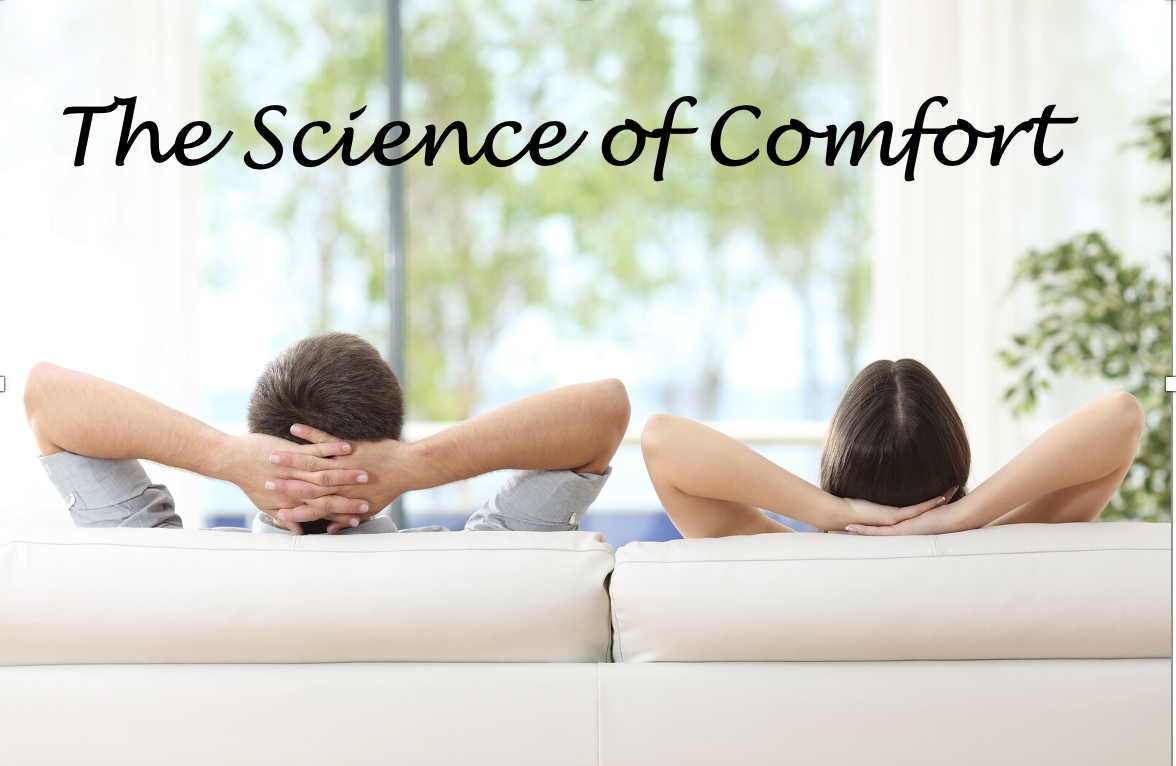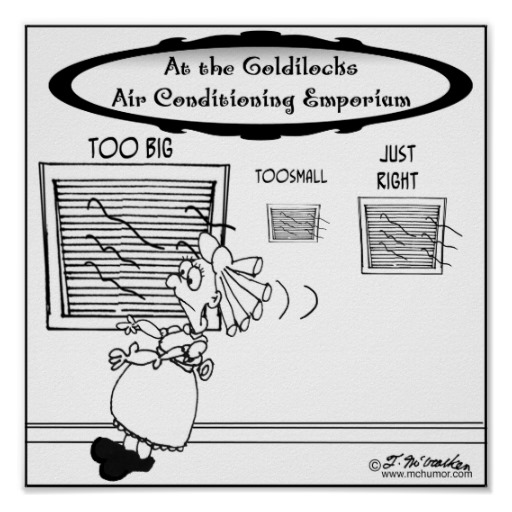5 Reasons Why Your HVAC Unit is Loud Do you find your HVAC unit excessively…

The Science of Comfort
For your convenience you can listen to the article here:
The HVAC business is the business of comfort. Our goal is to keep you comfortable in your home or commercial building. We want to do this all year round, no matter what the outside weather may be. In order to do that, we have to understand the science of thermal comfort.
So what is thermal comfort? According to the American Society of Heating, Refrigerating and Air Conditioning Engineers (ASHRAE), thermal comfort is defined as “that condition of mind which expresses satisfaction with the thermal environment and is assessed by subjective evaluation.”
In plain English, that means that thermal comfort is the feeling that you’re satisfied with the temperature of your environment. You don’t feel too warm or too cold—instead, like Goldilocks, you feel just right.
The problem is that getting to this feeling isn’t just a matter of the temperature on the thermostat. Any family who’s fought over thermostat settings can tell you that. In fact, there are several different factors that affect your individual thermal comfort.
Let’s take a look at what those factors are and how you can control them to make your own environment more comfortable.
See Also: Lower Your Energy Bill This Summer
Personal Factors
There are two major personal factors that affect your thermal comfort: metabolic rate and clothing.
- Your metabolic rate has to do with how much heat your own body is generating. When your metabolic rate is lower, you generate less heat. When it’s higher, you generate more heat. For instance, if you’re sitting on the couch watching television, your metabolic rate is lower, which means you’ll tend to feel colder. That might make you want to grab a blanket and cover up. On the other hand, if you’re doing some active housework, like vacuuming or scrubbing the bathroom, you might feel warm. Chase the kids around for a few minutes, and you might even start to sweat. The temperature on the thermostat hasn’t changed, but your thermal comfort has due to the changes in your metabolic rate. This is why people who sit at desks in offices all day often end up feeling cold! Metabolic rate can be affected by things other than activity, too. The metabolic rate of an individual is determined by many factors, including age, health, sex, and more. This is one of the big causes of those thermostat battles.
- The second major personal factor influencing thermal comfort is clothing. This is pretty obvious—if you wear heavier clothing, you’ll be warmer. Layers are warming. Looser clothes are cooling. Sometimes a change as small as putting on a pair of socks can make a big difference in thermal comfort at home. For businesses, changes in the dress code or required uniform can have a significant effect on thermal comfort—and that can affect the bottom line. Allowing workers to wear lighter clothing in the summer can improve thermal comfort and reduce the amount you need to spend on air conditioning.
See Also: Staying Cool During Power Outages
Environmental Factors
In addition to the personal factors, there are four major environmental factors that affect thermal comfort.
Air Temperature
This is what your thermostat measures and many people mistakenly think it’s the only thing that affects comfort. It’s definitely not. Because it’s the easiest to control with your HVAC system, changing the air temperature can be used to balance out the other factors and provide thermal comfort.
Moving Air
Moving air carries heat away from the individual person, creating a cooling effect. Outside in the winter, this creates what we call the wind chill effect. This is where the “feels like” temperature is lower than the actual temperature. Indoors in the warmer months, we can use this effect to improve thermal comfort. Ceiling fans and ventilation systems can keep the air moving and cool us down without lowering the actual air temperature.
Humidity
Relative humidity is the third environmental factor that has a major effect on thermal comfort. That’s particularly true in the summer, but it matters all year long. In hot, humid weather, sweat can’t evaporate very well. This means that our bodies’ own cooling system doesn’t work efficiently. This is why meteorologists talk about the “heat index.” This is where the “feels like” temperature is higher than the actual temperature due to the humidity. Lowering the humidity can really improve thermal comfort in the summer. Luckily, air conditioners don’t just decrease the air temperature—they also decrease humidity too, when they’re running correctly. The problem is that if the air conditioner isn’t running for long enough at a time, or if the humidity is just too high, then the air conditioner can’t reduce indoor humidity enough on its own. But a whole-house dehumidifier installed in the HVAC system can reduce the humidity to the ideal level for thermal comfort.
Radiant Temperature
The final environmental factor influencing thermal comfort is radiant temperature. Have you ever felt too warm because you were cooking over a hot stove? Have you been too cold because you were walking barefoot across a tile floor? Then you’ve experienced how radiant temperatures affect thermal comfort. Radiant temperature refers to the temperature of the surfaces around us. Walls, floors, windows, furniture, appliances, and other surfaces may be warmer or colder than we are. They’ll affect our thermal comfort accordingly. Increased insulation and energy-efficient windows can help to reduce the effects of radiant temperature differences. You can also help to control these effects by doing things like putting down carpet on a cold bedroom floor or avoiding using the oven when it’s hot outside.
See Also: Update Your Thermostat to Save Money and Time
Conclusion
Understanding what thermal comfort is and the factors influencing it can help you to make your own home or business a more comfortable place. And our Comfort Consultants are always happy to assist you in that process!
See Also: Contact Us



